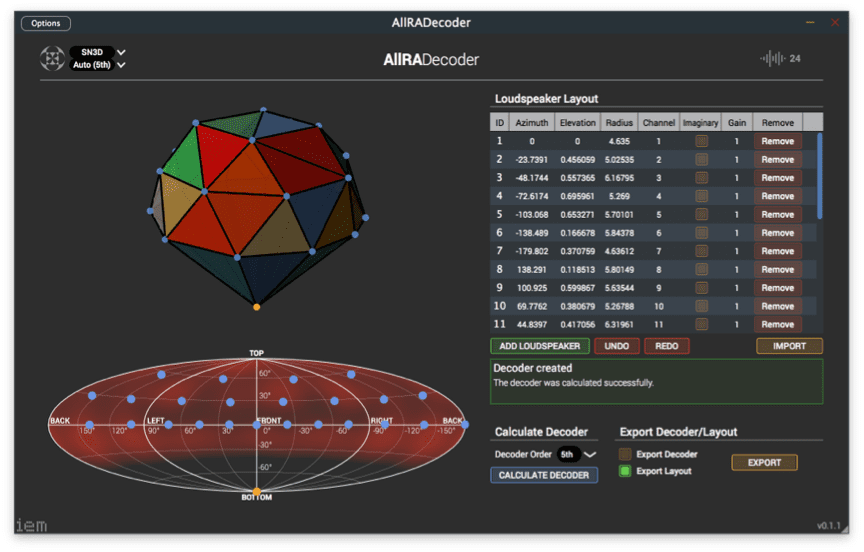Intensive Workshop
Critical Spatialization in Ableton Live with IEM Suite
An intensive workshop on the implementation of object based audio from a technical and critical perspective. Over three sessions, participants will explore the integration of the IEM Suite v1.15.0—developed within the European academic context—into the Ableton Live environment. Through practical exercises, the workshop will cover the principles of Ambisonics architecture, spatial design strategies, and workflows for 3D creation and mixing with technical precision and critical thinking.

📅 January 14–16, 2026
Registration open until January 10, 2026
💻 Online, in real time (sessions are recorded)
🕗 Schedule: 8:00 PM (Argentina) / 5:00 PM (Mexico) / 6:00 PM (Colombia) / 12:00 AM (Spain)
⏱️ 3 intensive sessions, 2 hours each
🔘 Level: Intermediate (Ableton Live)
🎯 Cost:
USD 90 until December 20
USD 120 from December 21 onward
(Includes materials, project template, and access to reference resources.)
👥 Limited to 6 participants
💬 Language: Spanish
Why this workshop?
Most current immersive environments rely on closed ecosystems.
This workshop proposes an alternative: a professional, fully open source workflow based on the IEM Suite v1.15.0, a benchmark in academic research and professional production.
The goal is not to maximize registrations, but to provide a genuine support space where each participant sets up their own environment, understands its operation, and applies advanced 3D mixing techniques within Ableton Live.
Target audience
Producers, composers, and sound designers with intermediate Ableton Live skills who want to integrate 3D spatialization into their practice without relying on proprietary systems.
Ideal for those who want to understand not only how to use the technology, but also why it works and its perceptual impact.
What you will learn
Day 1 — Sound Object and Cartesian Routing
- We set up an operational Ambisonics environment within Ableton Live.
- We learn to differentiate angular panning from Cartesian positioning (X, Y, Z).
- We build our own 3D mixing template.
→ Outcome: we calibrate our environment for IEM binaural encoding/decoding.
Day 2 — Perceptual Density and Spatial Automation
- We explore the vertical axis, distance, and perceptual transformations of movement.
- We implement multiband spatial compression, synchronized delays, and real-time control via Macros.
- We map spatial parameters to Macros for dynamic control.
→ Outcome: gain technical mastery over movement and its perceptual impact in listening.
Day 3 — Standards, Architectures, and Distribution Workflows
- We analyze metadata (ADM, IAMF) and export formats.
- We compare open-source workflows with proprietary systems (Dolby Atmos, SPAT Revolution).
- We review how to prepare mixes for professional immersive distribution.
→ Outcome: acquire technical and conceptual judgment to integrate our mixes into immersive distribution environments.


The methodology combines guided practice with technical reflection.
The goal is to deconstruct the complexity of systems to reveal their operational principles, enabling conscious, ethical, and precise use of the technology.
Each participant works on their own mixing environment in real time, with personalized technical guidance.
